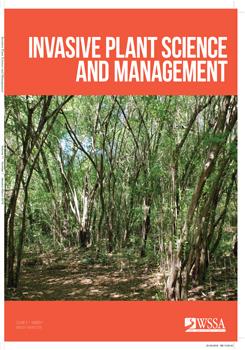Alien invasive species have strategies that can maintain fitness in a variety of environments. This flexibility is associated with environmental tolerance in several traits, such as allocation of resources to shoots versus roots, clonal versus sexual reproduction, and survival of seedlings. These traits were explored in the chandelier plant (Kalanchoe delagoensis Eckl. & Zeyh.), which has invasive populations in several countries. Light and water tolerance and herbicide treatments were tested on plantlet survival. Plantlet survival in the most extreme cases (full sunlight and no watering) was close to 30%, whereas in less severe conditions (water and shaded), it was close to 100%. Stress conditions triggered the onset of plantlet production from the margin of leaves, which increased clonality. Biomass was allocated primarily to aboveground structures. Although all herbicides resulted in high plantlet mortality (>85%), only 2,4-D and glyphosate 2,4-D amine achieved the maximum recorded mortality a few days after the chemical application. The high tolerance of K. delagoensis plantlets to varying conditions shows that under stress, plantlet production is enhanced as survival of established individuals decreases. Biomass is primarily aboveground, which can potentially alter nitrogen and carbon in poor arid environments, and the proportion of the biomass assigned to belowground roots increased with an increase in sunlight received. Even though the chemical treatments 2,4-D and glyphosate 2,4-D amine have been shown to be the only effective treatments, the 2,4-D treatment may be the most viable (cost quantity) to reduce the propagation of K. delagoensis. Plantlets have become the main reason for population persistence, partially due to the plant's environmental tolerance and ability to reproduce asexually in short time periods. Susceptibility of plantlets to the two herbicides presents a means to adequately manage invasions of K. delagoensis in Mexico.
How to translate text using browser tools
1 March 2018
Biomass Allocation, Plantlet Survival, and Chemical Control of the Invasive Chandelier Plant (Kalanchoe delagoensis) (Crassulaceae)
Azalea Guerra-García,
Diego Barrales-Alcalá,
Magda Argueta-Guzmán,
Abraham Cruz,
Maria C. Mandujano,
Jose A. Arévalo-Ramírez,
Brook G. Milligan,
Jordan Golubov
ACCESS THE FULL ARTICLE
asexual reproduction
chemical control
invasive species
plantlet
recruitment





